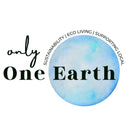The Power of Upcycling: Turning Trash into Treasure
In a world where waste seems to be piling up faster than we can keep track, there's a shining star in the eco-friendly movement: upcycling. It's like recycling's creative cousin, taking items that are destined for the landfill and transforming them into something new, useful, and often beautiful. In this blog, we'll explore the magic of upcycling, provide examples of how it works, and help you understand the difference between recycling and upcycling.
What is Upcycling?
Upcycling is the art of giving new life to old and discarded items. Instead of breaking down materials to make something entirely different (as in recycling), upcycling takes existing items and creatively repurposes them, often in a way that enhances their value or usefulness.
Examples of Upcycling:
-
Vintage Suitcase Shelves: Turn old suitcases into charming wall shelves. Just attach them to the wall, open-side out, and you've got a unique display shelf with a touch of nostalgia.
-
Tire Ottomans: Old tires, often an environmental eyesore, can be transformed into comfy and stylish ottomans with some padding and fabric. They're a conversation starter in any room.
-
Glass Bottle Chandeliers: Instead of tossing glass bottles into the recycling bin, gather them to create a dazzling chandelier. The interplay of light through colorful bottles adds a unique ambiance to any space.
-
Denim Patchwork Quilts: Worn-out jeans are perfect for upcycling into cozy patchwork quilts. Each square tells a story, and the finished product is not just functional but also full of character.
-
Pallet Furniture: Discarded pallets can become a range of furniture items, from coffee tables to outdoor lounges. Sand them down, add some paint or varnish, and voilà, you've got stylish and affordable furniture.
Recycling vs. Upcycling: What's the Difference?
While recycling and upcycling both play essential roles in reducing waste, they're not the same. Here's the lowdown on the differences:
Recycling:
Recycling involves breaking down materials like paper, glass, plastic, or metal to their base form. These materials are then reprocessed and used to create new products. It's like taking a used book and turning it into blank paper again.
Pros:
- Reduces the need for raw materials.
- Lowers energy consumption compared to creating new items from scratch.
- Decreases landfill waste.
Cons:
- Can be energy-intensive during the recycling process.
- Some materials degrade in quality through recycling.
Upcycling:
Upcycling, on the other hand, doesn't break down materials. Instead, it elevates them into something new without degrading their quality. It's like taking that old book and turning it into a unique piece of art.
Pros:
- Encourages creativity and innovation.
- Often requires less energy compared to recycling.
- Preserves the original item's character.
Cons:
- Limited in terms of what materials can be upcycled.
- May not be as efficient at reducing waste as recycling.
In essence, recycling and upcycling are complementary strategies for reducing waste. Recycling is excellent for materials like glass or aluminum that can be efficiently broken down and remade into new products. Upcycling shines when you want to breathe new life into items with sentimental value or unique aesthetics.
Wrapping Up
Upcycling is a fantastic way to reduce waste, save money, and express your creativity. It's about seeing potential in items that others might discard and turning them into treasures. So, the next time you're about to toss something in the trash, pause for a moment and ask yourself if it could be upcycled into something wonderful. You might just discover the joy of turning trash into treasure while making a positive impact on the environment. Happy upcycling!
